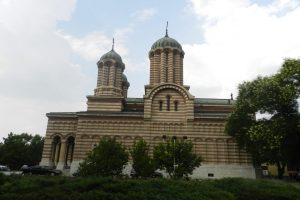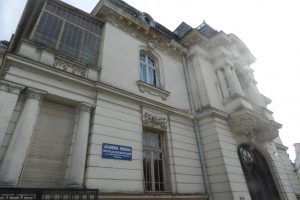

In the 17th through 19th centuries, in the space that currently holds the History- Archeology section of the Museum of Oltenia, there was a fount from which water carriers supplied with drinking water that they distributed for cost in the historical area of Craiova. The land belonged to the Maica Precistă din Dud Church, today Madona Dudu Church. On this land there is also a part of an old forest, of which remains a small portion, in the current Mihai Bravu Park. The space also belonged to Brânduşa quarter, of which it was separated by a fount, that connected the Vlăicii Valley fount to one of the former branches of the Jiu river.
In front of the current building there was a wooden bridge that connected Dorobănţia quarter where the „dorobanti” used to live, who protected Craiova and also had military obbligations. At the end of the 19th century, on the grounds of the donation made by the Madona Dudu foundation by a certain Preda, there was talk of the city building a hospice. Under these conditions the project of the future building contained an inside closed courtyard and barred windows higher than those on regular buildings.
Craiova’s leadership, that had received this land by donation, reckoned that placing such a hospital was inapproproate, being too close to the city center. As such, the new hospital building was built outside then Craiova. With funds from the Ministry of Education and Cults, as well as from the Craiova City hall, the current residence construction began at the beginning of the 20th century.
The construction of the Museum of Oltenia History and Archeology section, by the plans of architect Fr. Billek, was finished in 1906 and inaugurated the fall of that same year, on the 40 year reigning anniversary of king Carol I, functioning as an elementary mixed school. In this space a lot of orphans who also developed a profession were housed. With their own funs obtained through different means: workmanship objects done by students and sold by the Craiova Ladies Comitee on the great holidays during the year, nourishment was ensured for a lot of poor students, everything patroned by the serving priests of the Madona Dudu Church. In November 1940 the building was severely damaged by the eathquake that year, scholastic activity being transferred for a while until the building was reconsolidated. In 1948 religious foundations and private schools were abolished by the comunist regime. As such, with the direct intervention from the future academician C.S. Nicolăescu-Plopşor and his school mate – Ştefan Voitec, education minister at the time, the building was given to the Museum of Oltenia. Here the state’s archives were kept for a while and all museums in Craiova.



